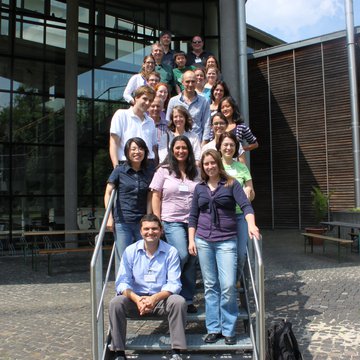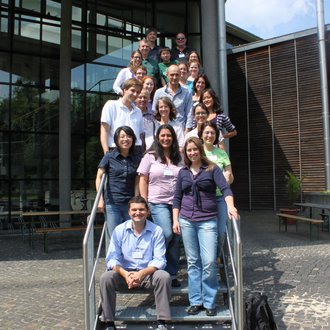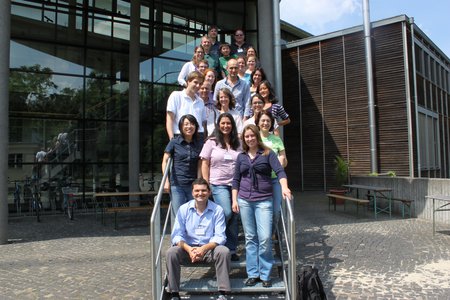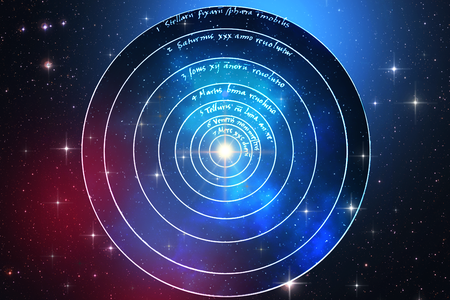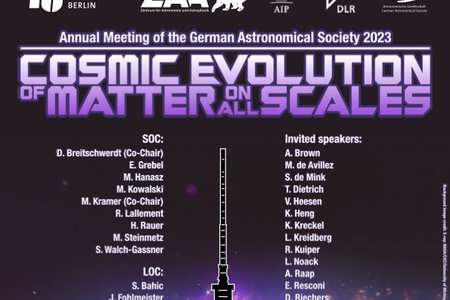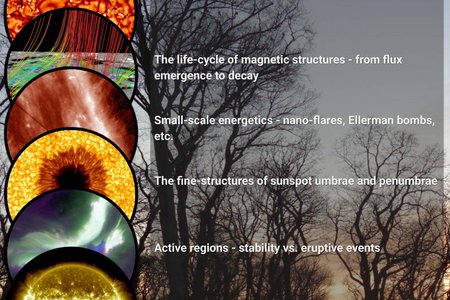Galactic Archaeology with SEGUE
6 - 8 July 2011, Workshop at AIP
From 6th to 8th July 2011 the Leibniz-Institut für Astrophysik Potsdam (AIP) hosted the Workshop GALACTIC ARCHAEOLOGY WITH SEGUE, organized by Dr. Cristina Chiappini (Chair), Dorothée Brauer and Dr. Arman Khalatyan.
SEGUE-2, an already completed SDSS-III survey that is the continuation of the SDSS-II Sloan Extension for Galactic Understanding and Exploration (SEGUE), measured medium-resolution (R ≈ 1800) optical spectra of around 200,000 stars in a variety of target categories, probing chemical evolution, stellar kinematics and substructure, and the mass profile of the dark matter halo from the solar neighbourhood to distances of 100 kpc. Together SEGUE-1 and SEGUE-2 have gathered around 500,000 spectra of stars in the Milky Way. SEGUE is complementary to the RAVE survey, which provides higher resolution data for brighter objects more concentrated in the solar neighbourhood.
The SEGUE workshop counted with the participation of 25 international researchers, among which the SEGUE Survey Principal Investigator, Dr. Constance Rockosi, Associate Professor at the University of California, Santa Cruz (UCO/Lick Observatory), and of the SEGUE Survey Scientist, Dr. Timothy Beers, Professor at the Michigan State University.
The AIP is part of SDSSIII as part of the German Participation Group. Dr. Cristina Chiappini, staff scientist at AIP, is a SDSSIII member via the Brazilian Participation Group.
Further information
SDSSIII – SEGUE2 Survey: Mapping the Outer Milky Way
http://www.sdss3.org/surveys/segue2.php
SDSSIII
6 - 8 July 2011, Workshop at AIP
From 6th to 8th July 2011 the Leibniz-Institut für Astrophysik Potsdam (AIP) hosted the Workshop GALACTIC ARCHAEOLOGY WITH SEGUE, organized by Dr. Cristina Chiappini (Chair), Dorothée Brauer and Dr. Arman Khalatyan.
SEGUE-2, an already completed SDSS-III survey that is the continuation of the SDSS-II Sloan Extension for Galactic Understanding and Exploration (SEGUE), measured medium-resolution (R ≈ 1800) optical spectra of around 200,000 stars in a variety of target categories, probing chemical evolution, stellar kinematics and substructure, and the mass profile of the dark matter halo from the solar neighbourhood to distances of 100 kpc. Together SEGUE-1 and SEGUE-2 have gathered around 500,000 spectra of stars in the Milky Way. SEGUE is complementary to the RAVE survey, which provides higher resolution data for brighter objects more concentrated in the solar neighbourhood.
The SEGUE workshop counted with the participation of 25 international researchers, among which the SEGUE Survey Principal Investigator, Dr. Constance Rockosi, Associate Professor at the University of California, Santa Cruz (UCO/Lick Observatory), and of the SEGUE Survey Scientist, Dr. Timothy Beers, Professor at the Michigan State University.
The AIP is part of SDSSIII as part of the German Participation Group. Dr. Cristina Chiappini, staff scientist at AIP, is a SDSSIII member via the Brazilian Participation Group.
Further information
SDSSIII – SEGUE2 Survey: Mapping the Outer Milky Way
http://www.sdss3.org/surveys/segue2.php
SDSSIII
Images
SEGUE workshop at AIP.
Big screen size [1000 x 666, 160 KB]
Original size [4752 x 3168, 2.0 MB]
